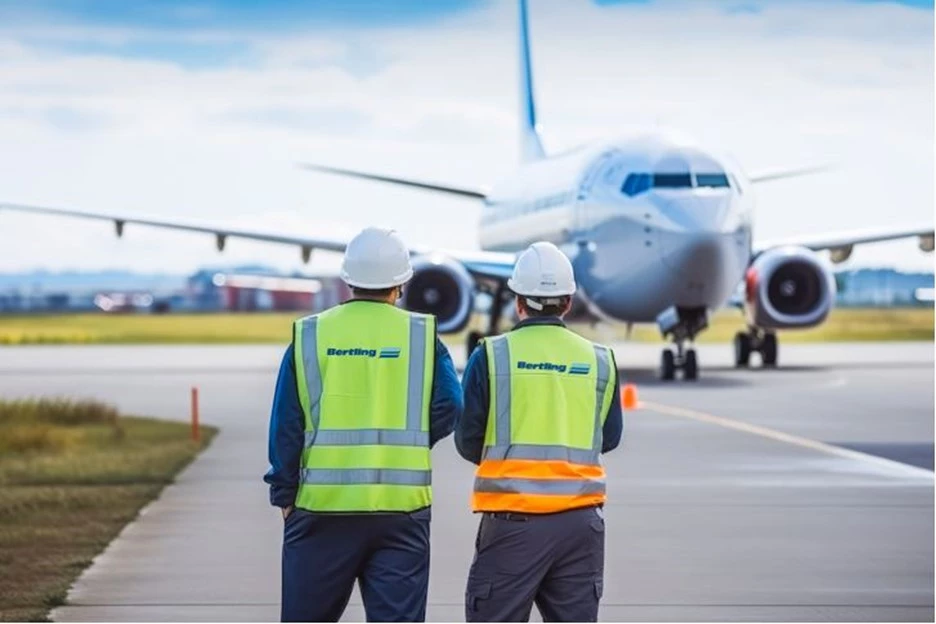Key air freight market trends and developments
In November 2024, the global air cargo market continued to grow and recorded its 13th consecutive month of double-digit demand increases. Demand rose by 10% year-on-year, driven by a booming e-commerce sector. Meanwhile, global air cargo capacity saw a marginal growth of 2%, resulting in a supply-demand imbalance. This imbalance pushed global air cargo spot rates to their highest levels in nearly two years, reaching $2.90 per kilogram (Xeneta). The dynamic load factor, measuring capacity utilization based on weight and volume, also hit its highest point in over 30 months at 63%.
Despite hopes for a “peak of all peaks” in Q4, the industry avoided extreme volatility, reflecting a more mature and stable air cargo market. While November’s data revealed a robust +10% demand growth over the same month in 2023, the season has been less intense compared to last year, with only a 12% increase in spot rates from September to early December, compared to a 25% jump in the same period last year.
Lessons learned from the chaotic peak season of 2023, which saw skyrocketing rates and a capacity shortage at the expense of shippers. Improved allocation of resources, proactive capacity management, and stronger collaboration between carriers, forwarders, and shippers have contributed to more manageable and predictable operations in 2024.
Regional air freight market trends
Spot rates from Northeast Asia to Europe increased by 13% month-on-month to $5.09 per kilogram, while rates to North America rose 5% to $5.20 per kilogram. However, Southeast Asia’s spot rates showed mixed results; rates to Europe remained flat at $4.15 per kilogram, while rates to North America declined by 3% to $6.05 per kilogram due to easing volumes.
In contrast, the Transatlantic market experienced dramatic freight rate increases as capacity shifted elsewhere. Spot rates from Europe to North America surged by 46% month-on-month to $2.72 per kilogram, driven by reduced passenger flights in the winter season. Similarly, Europe to Latin America rates climbed by 23% to $4.58 per kilogram, fueled by operational disruptions in Brazil, including a five-day embargo at Sao Paulo’s largest cargo airport and ongoing customs delays caused by a nationwide strike.
European airports have been experiencing peak season challenges, including high volumes, labor shortages, and missed delivery slots. Ferries are overbooked, causing additional costs in terms of waiting times, special handling, and exceeded driving hours. Some export carriers, particularly on Asia-bound routes, are even considering empty return flights due to high import volumes of e-commerce imports from Asia into Europe and the United States. Trucking companies have announced rate increases for dedicated full truckload (FTL) services, with some refusing last-minute orders to avoid long border delays. Backlogs
are already starting, adding further strain to supply chains.
Looking ahead, peak season disruptions, including airport bottlenecks and extended waiting times, are expected to persist. As a result, proactive planning and adding buffer times for airfreight shipments will be crucial. As the air cargo market prepares to enter 2025, its maturity and adaptability in 2024 offer a promising foundation for continued stability.
Global air freight market from November to December
General
- The global air cargo market recorded its 13th consecutive month of double-digit demand increases in November 2024.
- Spot rates reached their highest level in nearly two years and a sixth month of double-digit year-on-year growth.
- Air cargo capacity grew marginally by 2%, leading to a supply-demand imbalance.
- The dynamic load factor hit 63%, its highest level in over 30 months.
MAIN REASONS FOR BOTTLENECKS
- High volumes of e-commerce imports, particularly from Asia, have strained air freight and airport handling.
- Labor shortages at European airports contributed to disruptions.
- A five-day embargo at Sao Paulo’s largest cargo airport and a nationwide customs strike led to operational disruptions in Brazil.
- Reduced passenger flights during the winter season have led to diminished air cargo capacity on certain routes.
- Trucking companies increased full truckload (FTL) rates and limited last-minute orders to avoid long border delays, creating additional supply chain backlogs.
Impact on air freight rates
- Air cargo capacity only grew marginally by 2%, leading to a supply-demand imbalance.
- Spot rates from Northeast Asia to Europe rose by 13% month-on-month, and rates to North America increased 5%.
- Southeast Asia’s spot rates to Europe remained flat at $4.15 per kilogram, while rates to North America declined by 3%.
- Europe to North America spot rates climbed 46% mom.
- Europe to Latin America rates rose by 23% mom.
OUTLOOK
- Peak season disruptions, such as waiting times, bottlenecks at airports, and capacity constraints, are expected to persist through the end of the year.
- The maturity and stability demonstrated by the air cargo market in 2024 provide a solid foundation for 2025.
- Proactive planning and allocation of buffer times for airfreight shipments remain critical for mitigating delays.
Association member of IATA
Approved Bertling Offices
We have met the professional standards of the International Air Transport Association to promote, sell, and handle international air cargo transportation.
- Bertling Logistics Aberdeen
- Bertling Logistics Gothenburg
- Bertling Logistics Houston
- Bertling Logistics Bedfordview
- Bertling Logistics London
- Bertling Logistics Santiago
- Bertling Logistics Lima
- Bertling Logistics Singapore
Customer advice

Considering the ever-changing market conditions and forces, please:
- Think ahead and book well in advance. Try to plan for 6 months ++.
- Consider that the market can change significantly. Further disruptions can happen anytime.
- Identify contract options that enable flexibility and resilience for your business.
However, it is our job at Bertling to keep global supply moving and do all we can and apply our knowledge, network and expertise to protect our clients’ while taking the latest market developments into account. We are there to find the best solutions to ensure cargo flows.







